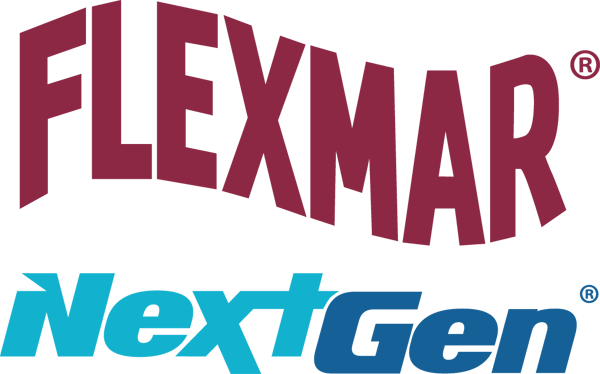FLEXMAR Floor Coatings Case Studies
FLEXMAR Polyaspartic Coatings Solve Durability, Maintenance Issues on VCT Tile in Dental Office
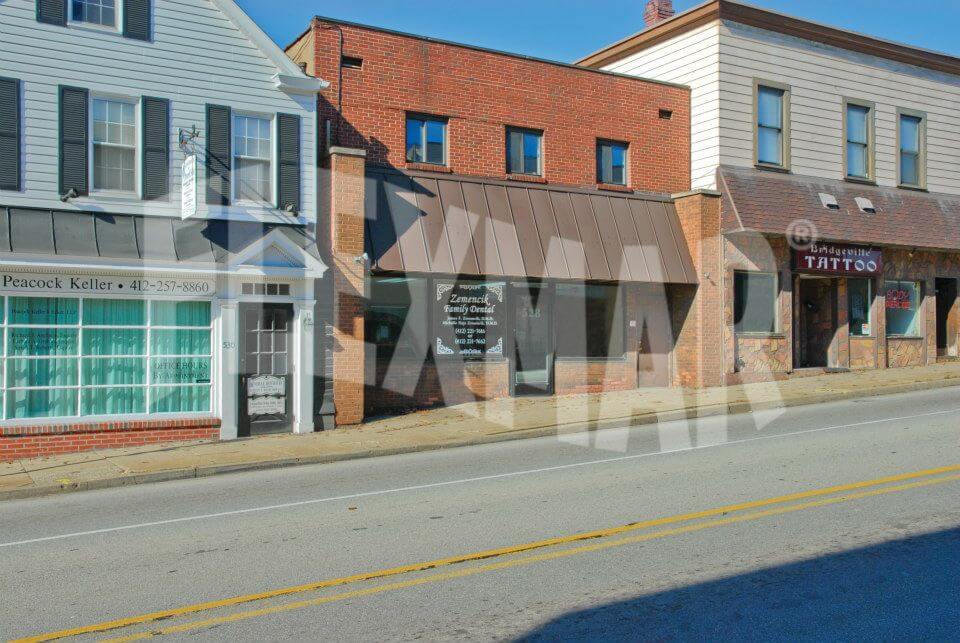
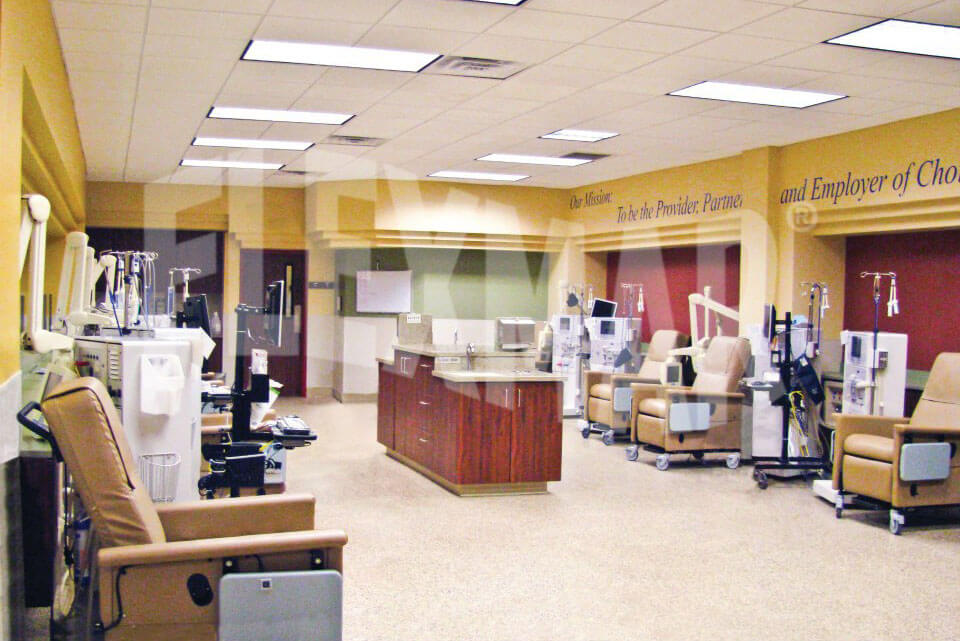
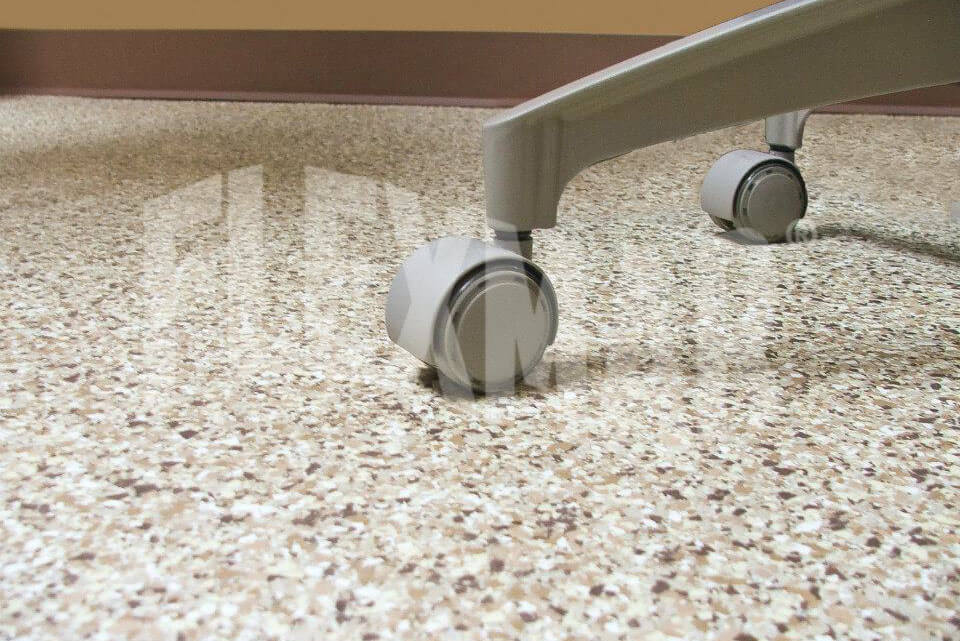
For years, vinyl tile has been a popular commercial flooring treatment. VCT flooring can be found almost universally in grocery and big box stores, schools, office suites, medical facilities . . . and dental offices. The floors within these commercial environments are exposed to abuses such as high foot traffic, rolling office chairs, cart, stretcher, and forklift traffic, food and chemical splashes and spills, and exposure to body fluids.
But while vinyl tile flooring is pervasive, it requires considerable attention and maintenance to keep a clean, presentable look for customers, students, patients, and employees—the people who will form instant opinions about an organization based on the facility’s appearance.
Wear and Tear in the Dental Office
Dr. James Zemencik, owner of a general dentistry practice outside of Pittsburgh, Pennsylvania, discovered firsthand that vinyl tile flooring isn’t all it’s cracked up to be. When he moved into his four-operatory dental suite in 1993, he had vinyl tile flooring installed in the high-traffic, high-abuse areas. At first, the floor looked great. But over time, with an average of 40 to 45 patients a week, the VCT flooring began to deteriorate.
The areas covered with vinyl tile flooring were susceptible to wear and degradation from chairs rolling across the floors, patient after patient, day after day. Flooring in the reception area saw wear from the office staff rolling back and forth between workstations and the counter to greet patients, and tiles in the dental operatories saw wear from the dentists rolling around patients during exams and procedures. Dr. Zemencik explained, “Because we move many times over a short distance, you can develop a wear pattern from us rolling on the chairs. The vinyl tile was definitely showing wear and tear.”
Floor Cleaning Regimen Becomes a Losing Battle
The Zemenciks employed a floor cleaning and maintenance regimen typical of dental practices: dry sweep daily, wet mop weekly, and strip and re-wax bi-annually. But even a task as basic as wet mopping required extra attention when selecting a cleaning solution:
“To clean the vinyl tile, we used hot water along with a soapy mix that wouldn’t strip the wax off because that would prematurely diminish our nice shine on the flooring. But it was difficult to find something that would clean, give the appearance of clean, smell pleasant for the patients, but yet not damage the wax.”
Besides the routine cleaning, every six months the Zemenciks had to bring in a crew to strip and re-wax the VCT. As Dr. Zemencik noted,
“It was an added time and expense where we had to close the office for floor maintenance.”
Frustrations Mount
“With weekly cleanings and biannual waxings, we tried to minimize the ugliness of its yellowing and worn appearance. But we eventually reached a point where it wasn’t making much of a difference. We couldn’t make it look good no matter how much we scrubbed or applied any type of cleanser. It just looked bad.”
And it wasn’t just the staff that recognized the worn, dirty appearance of the flooring. “Patients coming into the operatory also noticed the worn, tired flooring.”
“It was at that point that we decided we needed to make a change. We needed to find something that would hold up better than what we had.”
FLEXMAR Stands Apart from the Rest
As Dr. Zemencik and his wife began their search for a different hard surface floor treatment for their high-traffic areas, they realized that typical flooring would not meet their needs.
“We did not want to carpet the operatory rooms for fear of not being able to keep things as clean and sterile as we would like. The other option we looked at was hardwood flooring, which ultimately would have worn the same as the vinyl tile with the chairs wearing away the finish. So we definitely needed something that was more durable.”
They networked with other dental practices across the United States and eventually discovered a dental office in Massachusetts that replaced their flooring with FLEXMAR polyaspartic coatings. “We saw pictures of that application and a light bulb went off in our head. We realized that this may work for our dental office. And that’s when I contacted the FLEXMAR people in the Pittsburgh area.”
A FLEXMAR-trained applicator in the greater Pittsburgh area applied a test patch of the FLEXMAR clear poly-aspartic sealer directly to the existing vinyl tile in a high-wear area of one of the operatories. A month later, the clear sealer was not showing any wear whatsoever, and exhibiting excellent adhesion to the VCT flooring.
“It was probably at that point where I thought, ‘We know what we’re doing now and I’m going to be very happy with this floor.’”
Quick and Easy Application
The application of the FLEXMAR polyaspartic floor system was part of a wholesale renovation of the facility including carpeting elsewhere in the office and wall painting throughout.
Once the dental equipment was removed from the operatories, the FLEXMAR application crew prepared the floor surface to accept the polyaspartic coating. Normally, FLEXMAR polyaspartic floor coatings are applied to properly prepared concrete. But in this case, the polyaspartic base coat was applied directly to the properly prepared vinyl tile flooring. The VCT tiles were all intact, well bonded, without curled edges, so there was no need to remove the tiles and adhesive, reducing the overall application time and labor costs.
After the floor prep was complete, a pigmented FLEXMAR polyaspartic base coat was applied and colored vinyl chips were immediately broadcast into the still-wet coating. About an hour later, the base coat was dry, and the excess color flakes were removed. Then an initial coat of FLEXMAR clear polyaspartic sealer was applied to encapsulate the color flakes. After that coat was dry (again, in about an hour), a second coat of the FLEXMAR clear polyaspartic sealer was applied to increase the thickness of the coating and “pop” the color. In about an hour after the final coat was applied, the floor was ready to walk on and be returned to service, allowing the paint crews to enter and paint the walls.
Rapid Recoat and Return-to-Service Expedites Renovations
“The application of the floor was probably the easiest part,” said Zemencik. “FLEXMAR applicators came in and were able to do their work while the wall painters worked in other areas. Because the process dries quickly, we were able to get the painters into the operatories and reception area as soon as the FLEXMAR applicators were finished.”
Other hard-surface flooring systems can take days or weeks to complete, creating a backlog of work for other contractors. With FLEXMAR polyaspartic coatings, applicators can be in and out within a day, allowing other work to be completed in a timely manner. Application of a FLEXMAR coating system can occur without creating bottlenecks or delays. Such was the case with the dental office:
“Within an hour after the floor was completed the painters were able to come in and paint the walls without interfering with any of the work on the floor.”
With a rapid recoat and return to service, FLEXMAR polyaspartic coatings helped to reduce the practice’s overall downtime during the renovation.
Three Years Later . . .
After three years of normal use, the FLEXMAR polyaspartic floor is holding up just like new, with minimal maintenance. “We’re very pleased that we don’t need a professional company to come in and strip and clean the floors. Our cleaning regimen is to sweep daily and wet mop with an antibacterial soap weekly. And the shine is still there just like the day that they put it down. In terms of durability, in the three years that the floor’s been in place, we are not seeing the wear patterns from the chairs that we saw before.”
Dr. Zemencik remarked that even the customers noticed a difference in the floor:
“As soon as patients saw the renovations and the new floor, the comments were unbelievable. They were very pleased with the color changebut they were very impressed with the act that the floor now looks very professional and very clean. The rooms look that much better with the new flooring as opposed to that old vinyl tile.”
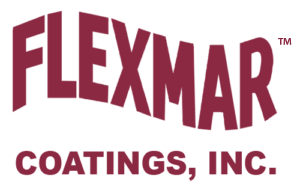
If it isn’t FLEXMAR, it’s just another coating.
- 1 hour between coats
- 1-2 hours return to service after final coat
- Allows for same day or overnight return to service
- 0 VOC
- Virtually no odor
- LEED Approved
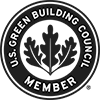
FLEXMAR polyaspartic coatings and sealers contribute toward satisfying credits in the Indoor Environmental Quality and Materials and Resources categories under LEED.†
† “USGBC” and related logo is a trademark owned by the U.S. Green Building Council and is used with permission. “LEED” is a trademark owned by the U.S. Green Building Council and is used with permission.
The coating system featured in this application is FLEXMAR Coatings Industrial Resinous Flooring ARCAT specification, FLEXMAR Color Flake Polyaspartic Coating System.*
Information on this page is the property of FLEXMAR Coatings, Inc. and may not be used without the express consent of FLEXMAR Coatings.
Copyright © 2016. FLEXMAR Coatings, Inc. All rights reserved.
PDF Document Available to Download
Ready for a FLEXMAR Floor?
Contact us today for more information about FLEXMAR products, available installation services through our applicator network, or if you need help choosing the right system for your floor.
